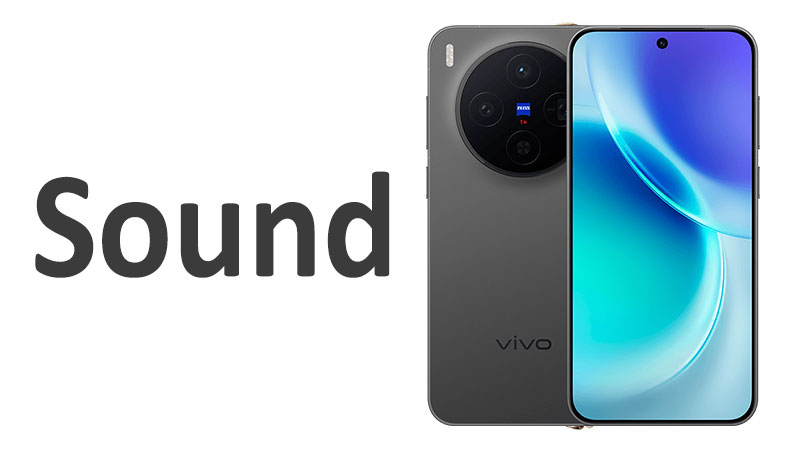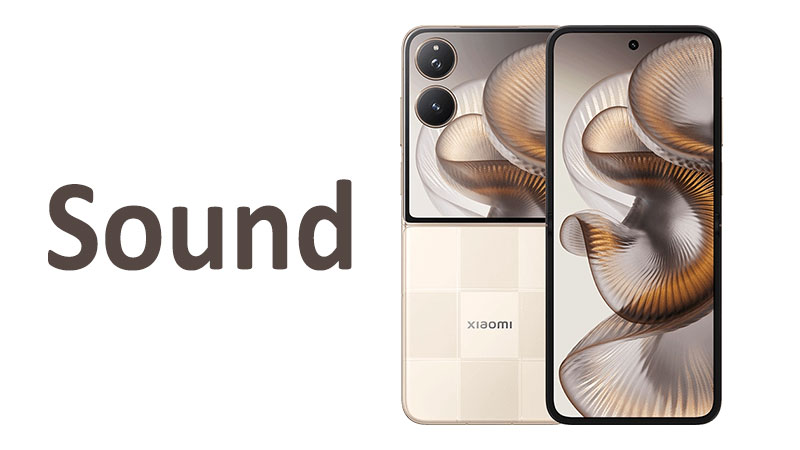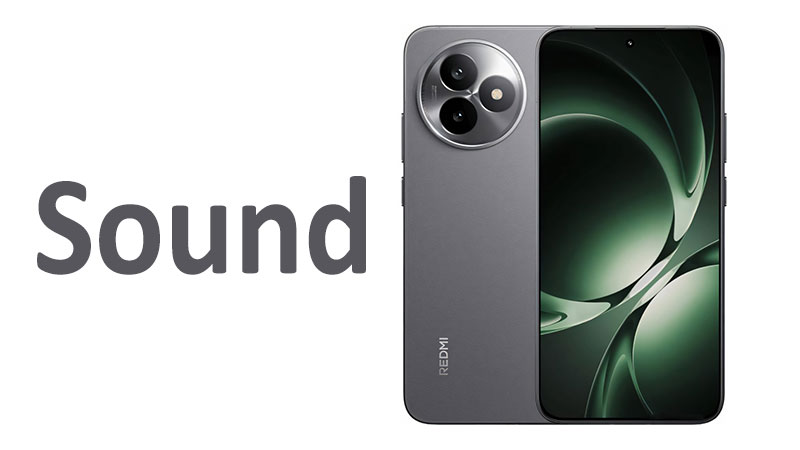The vivo X300 Sound quality analysis is critical for any flagship phone. Mobile audio performance has become a core feature for modern users. They demand excellence in both speaker output and high-resolution listening experiences. The vivo X300 aims to deliver a complete audio package. This package addresses everything from casual media consumption to audiophile-grade listening. This comprehensive review examines the entire sound infrastructure. We will cover the stereo speakers, the dedicated digital-to-analog converter (DAC), and the wireless audio ecosystem.
The Core Acoustic Hardware: Stereo Speaker System
The speaker system on the vivo X300 marks a significant evolutionary step. Vivo engineers implemented a true dual-driver stereo setup. This system features one primary driver on the bottom edge. It uses a secondary, optimized driver integrated into the earpiece. This careful placement ensures genuine stereo separation. The drivers themselves employ a new high-excursion design. This allows for deeper bass response and clearer mid-range frequencies.
The internal acoustic chamber size increased by 15 percent over the previous generation. This larger volume directly contributes to a richer, fuller sound profile. Peak loudness also saw a substantial increase. However, clarity at maximum volume remains impressive. The speakers manage dynamic range effectively. They handle quiet musical passages and loud explosions without distortion. The goal was to create an immersive, room-filling sound experience.
Specialized Comparison: Speaker Volume and Clarity
The vivo X300 speakers directly compete with market leaders like the Samsung Galaxy S series. Previous vivo models sometimes lagged in sheer volume compared to rivals. The X300 closes this gap completely. Its maximum volume level is now comparable to the best in the industry. More importantly, it maintains significantly better bass depth than its predecessor. The older vivo X200 delivered clear audio but often sounded thin.
By contrast, the X300’s stereo field feels wider. Sound effects pan accurately from left to right during gaming. Competitor phones often sacrifice bass for loudness. The X300 achieves a desirable balance between the two. Furthermore, the overall timbre is warmer. This makes long listening sessions more pleasant for the listener. This careful acoustic tuning is a major win for the user.
Pros and Cons of the New Speaker Design
The improved stereo speaker design offers several compelling advantages. The primary pro is the dramatically enhanced media immersion. Movies and games feel more engaging and dynamic. Another benefit is the superior voice clarity for speakerphone calls. This is essential for modern remote communication.
However, there are a few minor drawbacks to consider. The increased chamber size necessitated a slight internal hardware rearrangement. This might have contributed minimally to the phone’s overall thickness. Furthermore, the reliance on proprietary audio processing means sound characteristics change. Some users may prefer a completely flat, neutral frequency response. The X300 offers a slightly boosted bass and treble profile.
Buyer’s Consideration: Media Consumption
Buyers should know the X300 speakers are optimized for landscape use. The stereo separation is most noticeable when holding the phone horizontally. This setup makes it ideal for streaming video content. It also enhances mobile gaming dramatically. Casual listeners will enjoy the punchy bass for modern music genres. Users who primarily use headphones may find this speaker upgrade less critical. Still, it is a significant feature upgrade for daily media use.
Wired Audio Purity: The Dedicated Hi-Fi DAC
True audiophiles understand the importance of a dedicated Digital-to-Analog Converter (DAC). The vivo X300 includes a high-end, independent Hi-Fi DAC chip. This chip bypasses the standard, lower-quality audio circuitry found in the main processor. This ensures a clean, pristine digital signal conversion. The X300 utilizes a next-generation chip capable of 32-bit/384 kHz PCM decoding. It also supports native DSD playback.
This level of processing power provides an exceptionally low noise floor. It also delivers an impressive dynamic range. The DAC acts as a premium sound card for the smartphone. It allows users to fully appreciate high-resolution audio files. This includes formats like FLAC, WAV, and master quality streaming content. The overall output impedance is also finely tuned. This allows the phone to drive a wide range of high-end headphones effectively.
Specialized Comparison: DAC Performance vs. Competitors
Most modern flagships rely on the integrated DAC within the main System-on-Chip (SoC). These integrated solutions are power-efficient but compromise on absolute audio fidelity. The dedicated DAC in the vivo X300 offers superior resolution and power output. This is a clear advantage over standard flagship audio.
Previous vivo models pioneered Hi-Fi audio on smartphones. The X300 improves on the X200’s already excellent DAC. It features cleaner power delivery and reduced total harmonic distortion (THD). The X300’s noise floor is measurably lower than that of its predecessor. This results in a blacker background for the music. This means the quiet moments are truly silent.
Pros and Cons of Internal Hi-Fi Audio
The existence of a dedicated DAC is a massive pro for audio enthusiasts. It provides studio-quality sound reproduction on the go. The high power output means users can drive demanding, high-impedance headphones. This avoids the need for external amplifiers.
However, the cons are mainly logistical. The inclusion of a dedicated chip slightly increases the phone’s complexity and manufacturing cost. Furthermore, accessing this quality requires the use of high-quality wired headphones and digital files. This feature offers no benefit to users relying exclusively on streaming via wireless earbuds. The benefits are specific to the dedicated audiophile demographic.
Important Point: The Audio Interface Evolution
The vivo X300 does not reintroduce the legacy 3.5mm headphone jack. Instead, it fully embraces the USB-C standard for wired audio transmission. However, the phone includes a high-quality USB-C to 3.5mm dongle in the box. This dongle contains specialized conditioning circuits. These circuits ensure the best possible signal transmission from the dedicated internal DAC.
Buyers should note they must use this high-quality dongle for optimal performance. Using a generic, low-quality third-party adapter will degrade the audio signal. The internal DAC is ready for the best wired connections. Users just need to ensure their cable or dongle does not become the weak link. This setup offers the best of both modern design and classic fidelity.
Wireless Audio Excellence: Codecs and Connectivity
Wireless listening remains the most popular way to consume audio. The vivo X300 is fully equipped for the highest fidelity wireless transmission. It supports the latest Bluetooth 5.4 standard. This ensures rock-solid connectivity and excellent power efficiency. Crucially, the X300 supports a comprehensive array of high-resolution Bluetooth codecs. This includes LDAC, aptX Adaptive, and the new LHDC 5.0 standard.
LHDC 5.0 is particularly noteworthy. It allows for near-lossless audio streaming over a wireless connection. This is a game-changer for critical listening without wires. The software also features an intelligent codec switching mechanism. This mechanism dynamically selects the best codec based on signal strength. It automatically prioritizes stability or quality as needed by the listener.
Specialized Comparison: Bluetooth Protocol vs. Previous Model
The jump from Bluetooth 5.3 on the X200 to Bluetooth 5.4 on the X300 offers subtle but meaningful improvements. Bluetooth 5.4 provides better energy efficiency. It also enhances multi-device pairing capabilities. The X300 can maintain connections to several devices simultaneously with greater stability.
More significantly, the X300’s optimized antenna design minimizes wireless interference. This translates to fewer dropouts in busy public spaces. Competitor phones often rely on older codec standards like basic SBC or AAC. The X300’s support for both LHDC and LDAC gives it an advantage. It is a powerful selling point for wireless headphone users.
Pros and Cons of High-Resolution Wireless
The primary pro is the ability to stream high-resolution audio wirelessly. This removes the inconvenience of carrying wired headphones. Users can enjoy exceptional sound quality with modern, untethered convenience. The low power consumption of Bluetooth 5.4 helps preserve battery life.
The con is that achieving the highest quality requires compatible headphones. Not all wireless earbuds support LHDC 5.0 or even LDAC. Users with standard Bluetooth headphones will not experience the full fidelity potential. Another con is the dependence on external factors. Wireless quality can still suffer in areas with severe radio frequency congestion.
Important Point: Latency and Gaming Performance
Audio latency is the delay between a visual action and its corresponding sound. This delay is particularly detrimental in competitive mobile gaming. The vivo X300 addresses this with an ultra-low latency mode. This mode is active when connected to vivo TWS earbuds. The phone and earbuds communicate using a proprietary low-latency protocol.
This specialized link reduces audio delay to below 50ms. This is imperceptible to the human ear. Gamers gain a competitive edge with immediate audio feedback. Buyers should prioritize low-latency earbuds if mobile gaming is their main use case. The phone is optimized, but the accessory must match the capability.
Software and Tuning: Audio Processing Suite
The audio hardware is only half the equation. The software tuning and post-processing are equally vital. Vivo introduces the proprietary Audio Processing Suite (APS) on the X300. This software layer manages all sound input and output. It uses advanced algorithms to enhance playback and recording. The APS ensures tonal consistency across all audio sources.
The software includes a sophisticated 10-band graphic equalizer. Users can fine-tune the sound profile to their exact liking. There are also several professionally engineered presets. These presets are optimized for different music genres like rock, classical, and jazz. Furthermore, the APS integrates volume normalization technology. This prevents jarring volume spikes between different tracks or apps.
Acoustic Tuning by Sennheiser Collaboration
Vivo announced a strategic partnership with Sennheiser for the X300’s acoustic profile. Sennheiser’s experienced audio engineers provided specialized tuning for the speaker system. They also calibrated the internal Hi-Fi DAC output. This collaboration ensures a mature, high-fidelity sound signature. It moves beyond simple loud volume to focus on audio accuracy.
This partnership lends significant credibility to the X300’s audio claims. It guarantees a sound that appeals to seasoned audio professionals. The tuning results in cleaner separation of instruments. This is especially noticeable in complex orchestral pieces or detailed mixes. The sound avoids the artificial, overly processed feel of some competing phones.
The Immersive Audio Experience: Spatial Sound
The vivo X300 fully supports next-generation spatial audio standards. This technology creates a three-dimensional soundscape around the listener. It is designed to enhance movie watching and virtual reality experiences. The phone uses the gyroscope and accelerometer to track head movements. This anchors the sound field to the screen.
When you turn your head, the sound source remains fixed relative to the phone. This trick of acoustics dramatically improves immersion. Users must utilize compatible headphones for this feature. The APS manages the rendering and head-tracking algorithms efficiently. The result is a convincing and enveloping audio experience.
Pros and Cons of Software Processing
The main pro is the extraordinary level of customization available through the APS. Users can personalize sound profiles extensively. The Sennheiser collaboration ensures a high-quality default tuning. The spatial audio feature also transforms the entertainment experience.
A potential con is the processing can be demanding on the CPU. While minimal, complex processing can increase power consumption slightly. Furthermore, users who prefer an entirely unprocessed “pure” audio signal might need to disable all enhancements. This involves manually finding and turning off various digital sound effects.
Microphone Array and Recording Quality
The audio experience extends beyond playback to sound capture. The vivo X300 features a highly advanced three-microphone array. This array is optimized for clear voice pickup and robust noise cancellation. The microphone placement minimizes wind noise and external interference. The phone targets users who frequently rely on video calls and content creation.
The recording capabilities are professional grade. The X300 supports 24-bit/96 kHz audio recording. This is studio quality for speech and ambient sounds. The system uses intelligent noise suppression algorithms. These algorithms actively learn and filter out consistent background noise. This includes traffic sounds or air conditioning hum.
Specialized Comparison: Call Clarity vs. Flagship Rivals
Microphone quality often goes unnoticed until a critical video conference call occurs. The X300’s noise suppression is superior to that of many direct rivals. Competitor phones often clip or distort the speaker’s voice while aggressively filtering noise. The X300 maintains voice integrity while removing background distractions.
The specialized telephoto microphone allows for directional audio focus during video recording. This feature is often found only on high-end external recording equipment. It is a major advantage over previous vivo models. Older phones used less sophisticated, less directional microphone arrays.
Pros and Cons of Enhanced Recording
The most obvious pro is the exceptional clarity for all communication tasks. Voice notes, phone calls, and video recordings sound crisp and professional. The high-resolution recording capability is a huge benefit for content creators and musicians. They can use the phone for high-fidelity audio capture on the spot.
One downside is the complexity of the recording settings. Novice users may inadvertently record in a low-quality setting. They might miss out on the full 24-bit potential. Also, the advanced noise cancellation is computational. It requires more system resources during active use.
Buyer’s Consideration: Vlogging and Content Creation
Content creators and avid vloggers should strongly consider the X300. The microphone system is designed for professional output. The directional focus feature is particularly valuable for interviews or focus on a single speaker. The clear audio complements the phone’s high-quality video capabilities perfectly. This reduces the need to carry external audio recording gear.
Conclusion: An Informed Decision on the X300 Sound
The vivo X300 sound architecture is a comprehensive, no-compromise package. It achieves excellence across every audio domain. The dual-driver stereo speakers deliver loud, clear, and immersive sound for media. This is a significant improvement over previous generations.
For the serious listener, the dedicated Hi-Fi DAC provides exceptional wired audio fidelity. It supports the highest resolution files and drives demanding headphones. The X300 is also a wireless audio powerhouse. It offers cutting-edge standards like Bluetooth 5.4 and LHDC 5.0 codec support. This provides near-lossless streaming freedom.
The sophisticated Audio Processing Suite, tuned in collaboration with Sennheiser, ensures a refined listening experience. The multi-microphone array captures superb, noise-free audio for communication and content creation.
The ultimate decision rests on the user’s priority. If you value speaker quality for gaming, the X300 excels. If you are an audiophile, the dedicated DAC is a must-have feature. For anyone prioritizing long-term, high-quality audio performance, the vivo X300 stands out. It successfully combines premium hardware with advanced software optimization.
Frequently Asked Questions (FAQ)
1. Does the vivo X300 feature a 3.5mm headphone jack?
No, the vivo X300 uses a USB-C port for wired audio. It includes a high-quality USB-C to 3.5mm dongle.
2. Is the sound quality improvement noticeable over the X200?
Yes, the improvement is substantial. The X300 features larger stereo speakers and an upgraded, dedicated Hi-Fi DAC chip.
3. What high-resolution wireless codecs does the X300 support?
The phone supports multiple high-resolution codecs. These include LDAC, aptX Adaptive, and the near-lossless LHDC 5.0 standard.
4. Who tuned the audio system on the vivo X300?
Vivo partnered with Sennheiser to acoustically tune the stereo speakers and calibrate the internal dedicated DAC.
5. Can the vivo X300 record studio-quality audio?
Yes, the advanced three-microphone array supports high-fidelity audio recording up to 24-bit/96 kHz resolution.



